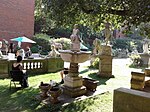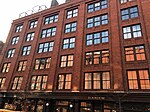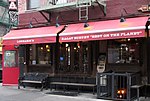St. Patrick's Old Cathedral School

St. Patrick's Old Cathedral School, at 32 Prince Street between Mulberry and Mott Streets in the Nolita neighborhood of Manhattan, New York City, was a Roman Catholic Pre-K through 8th grade school. It was one of the oldest schools in the Archdiocese of New York and in the city. It was founded by the Sisters of Charity and had a peak enrollment of approximately 500 students, Catholics and non-Catholics alike. The Federal-style building has been a New York City landmark since 1966 and, as part of the St. Patrick's Old Cathedral complex, was added to the National Register of Historic Places in 1977. It has been described as "the most significant institutional building in the Federal style surviving in New York City."The school closed in June 2010 due to low enrollment, and is slated to be turned into luxury townhouses, condominiums, and office space.
Excerpt from the Wikipedia article St. Patrick's Old Cathedral School (License: CC BY-SA 3.0, Authors, Images).St. Patrick's Old Cathedral School
Mott Street, New York Manhattan
Geographical coordinates (GPS) Address Nearby Places Show on map
Geographical coordinates (GPS)
| Latitude | Longitude |
|---|---|
| N 40.7228 ° | E -73.9951 ° |
Address
Mott Street 233
10012 New York, Manhattan
New York, United States
Open on Google Maps





